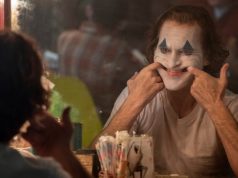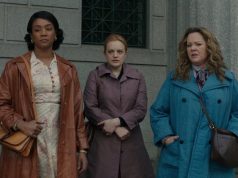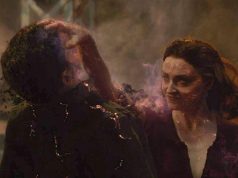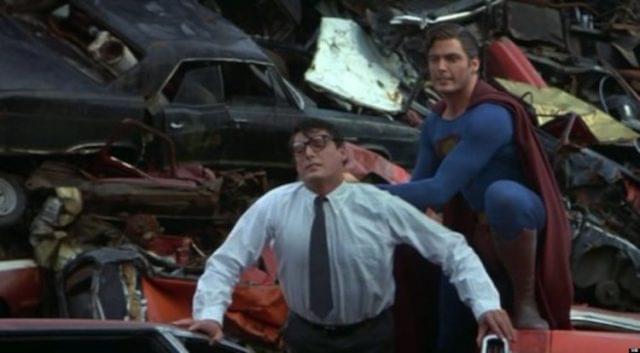
“Superman III” may be a terrible movie, but I admire the way the filmmakers stuck to their guns. Many of us, given the opportunity to make a Superman film, would be tempted to include some scenes of thrilling action and heroic derring-do. The “Superman III” people resisted this urge. The “Superman III” people — I will not tell you their names; it would only encourage them — boldly chose instead to cram their film with unfunny slapstick and inane story lines. To the casual observer, it might appear they had no idea they were making a Superman film at all, but rather believed the project was a vehicle for John Candy and Eugene Levy, and was perhaps going to be a cartoon.
In case your memory is faulty, this is not the one where Superman fights against a villain made out of nuclear energy (that’s “Superman IV”), nor is it the one where three Kryptonian villains travel to Earth in a mirror (that’s “Superman II”), nor is it the one where a turn-of-the-century matchmaker finds love (that’s “Hello Dolly”). “Superman III” is the one where Richard Pryor is a computer hacker helping an evil industrialist control the weather, and where Clark Kent goes to his high school reunion and almost kisses a girl. And there: I’ve just revealed the two most exciting things that happen in the movie.
Since the dynamic between Superman and Lois Lane was so successful in the first two films, “Superman III” cuts Lois out almost entirely, in accordance with the timeless principle that the things you should fix first are the things which are not broken. Poor Margot Kidder is relegated to just two scenes, one at the beginning and one at the end, with Lois Lane “on vacation” (my assumption: in rehab) in between. Her duties as alliteratively named love interest are taken over by Lana Lang (Annette O’Toole), who was the object of Clark’s affections back in high school and still lives in Smallville because, not to put too fine a point on it, she’s a loser.
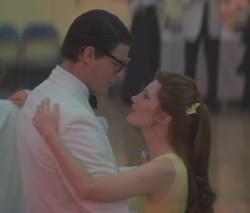
Clark and Lana meet up again at their 15-year reunion in Smallville, where banners declare them the Class of 1965, making this 1980, even though it’s actually 1983. (This can be explained by Superman reversing the rotation of the Earth, or by the filmmakers simply not caring, take your pick). Clark is here because he told his boss, Perry White (Jackie Coogan), that attending his high school reunion would make for an interesting feature story, and for some reason, possibly the result of a stroke, Mr. White believed this. He sent along Jimmy Olsen (Marc McClure), too, even though Jimmy Olsen is evidently the Daily Planet’s only photographer and must surely be needed in Metropolis. This is why newspapers are dying, people.

Meanwhile, there’s a guy in Metropolis named Gus, played by Richard Pryor, who is here to provide comic relief — and thank goodness, since otherwise the movie would be nothing but nonstop mildness and inaction! Gus is a smooth-talking, unemployed fellow who sees an ad for a computer-programming school, takes one class, and, presto, is now a computer genius. Gus gets a low-level job at a huge corporation called Webscoe and immediately embezzles a lot of money by redirecting all the half-cents in people’s paychecks to his own account. It’s very clever the way he does this. He accesses the company’s payroll on the computer, enters his employee number, and then types: “CHANNEL HALF CENTS FROM ALL WEBSCOE SALARIES INTO ABOVE EXPENSES ACCOUNT.” What, no password required?? Don’t be silly. Before this, there was a screen that said “GIVE SECURITY CODE,” and Gus typed, “OVERIDE ALL SECURITY” (yes, misspelled). You have to admit, you never would have thought of this, since it’s stupid and would never work.

The embezzlement earns Gus the attention of the CEO, billionaire Ross Webster (Robert Vaughn). Impressed by Gus’s ability to make computers do complicated things merely by giving them rudimentary commands that require no special skills, Webster assigns him to a larger task. Webster wants to ruin Colombia’s coffee crop (never mind why; does he need a reason?), and he figures he can do it by having Gus access one of the satellites that currently monitor the weather and reprogram it to cause the weather instead.
You might have noticed that this plan has a serious flaw, i.e., it is impossible and doesn’t make sense. The movie does not see this as a hindrance. The movie, which is as gleefully stupid as a brain-damaged puppy, believes that computers — all computers, even the basic model that was in your office in 1983, or 1980, or whatever year this is — can literally do anything. When Gus uses a computer to tell the satellite to send a tornado to Colombia, it also causes a random ATM to spit out extra cash and a random traffic light to malfunction. The people who made “Superman III” — again, don’t worry about their names — had heard the term “computer programming” once and thought it could be used as an explanation for everything that happened in their movie. “How did you do that?” “Computers! I programmed them!” It was the 1980s equivalent of the 1950s B-movies where everything was solved by Science! or Radar!**
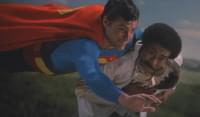
The dubiously created weather hits Colombia pretty hard, injuring a pair of tourists who were there on a vacation package they won in a Daily Planet-sponsored sweepstakes. The weather is not the newspaper’s fault, of course, but the tourists sue them for damages anyway. I mention it because the filing of a frivolous lawsuit is the most plausible event in the film.
And what about Clark Kent and Lana Lang, back in Smallville? Who cares! Who cares also about whatever Superman is up to, when he’s not being Clark Kent! Believe me, there is nothing of interest on either front. Oh, except that Superman saved the Colombian coffee crop by drying up all the extra rain with his magic water-drying powers, which he totally has. This sorely vexes Webster, who believed his plan of turning a data-gathering satellite into a tornado-producing machine was foolproof. Now he wants Gus to use Computers! to figure out what’s in kryptonite so they can make a fake batch of it and kill Superman with it. (The computer replies: “INSTRUCTIONS RECIEVED [sic].”) This plan, too, seems foolproof. Webster probably figures the only reason none of Superman’s other enemies ever did it was that they never thought of it — that, or they were sadly ignorant of the power of Computers! This is why it pays to be tech-savvy.
This plan, too, seems foolproof. Webster probably figures the only reason none of Superman’s other enemies ever did it was that they never thought of it — that, or they were sadly ignorant of the power of Computers! This is why it pays to be tech-savvy.
Somehow, despite the foolproof nature of this plan, the homemade kryptonite fails to kill Superman. It only makes him surly and apathetic, like a DMV employee, or Tommy Lee Jones. He arrives too late to a distress call, and later straightens the leaning tower of Pisa. Because of this — and I mean it, those are the only examples given — all the nations of the world join in censuring Superman for his awful behavior. After this, Superman blows out the Olympic torch and gets drunk in a bar. The movie suggests that what we have now is a “dark” Superman. The problem is that the movie is too sissy to show us what a dark Superman would really be like: breaking into bank vaults, using X-ray vision to see into women’s locker rooms, pulling bad guys’ heads off their bodies, throwing the moon into the sun, etc. The worst thing he’s allowed to do is get liquored up, and it’s not like he drives afterward.
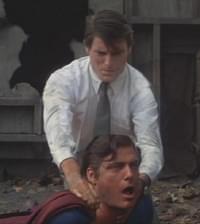
What he does is fly to a junkyard and get into a fight with himself. Clark Kent, representing Superman’s good side, materializes, and the two entities have it out, supermano-a-supermano. This physical manifestation of Superman’s inner turmoil isn’t the worst idea I’ve ever heard, although it does end, unfortunately, with Good Clark strangling Bad Superman to death, making it a rather strange incident of autoerotic asphyxiation. (You might question the “erotic” part, but come on. One of them is wearing brightly colored tights.)
Superman is back to normal now, after like 10 minutes of being “bad.” Thank goodness the movie nipped that non-crisis in the bud before it developed into something interesting. Now Superman can get back to defeating Webster, who has forced Gus to build a giant supercomputer in a cave in the Grand Canyon and guard it with missiles. It should not surprise you to learn that building the giant supercomputer was very, very easy, and that installing it in the Grand Canyon was no problem either. Undertaking a major construction project in the middle of a national park is not a big deal at all. You have to fill out some forms at the ranger’s station, but that’s it.
Anyway, this supercomputer doesn’t kill Superman any better than the other Superman-killing devices did. The whole scheme is a big waste of time, or at least it would be if it had taken any time to execute in the first place. (The entire movie, from beginning to end — Gus’s embezzlement, the satellite, the supercomputer — happens during Lois Lane’s vacation, which we’re told lasted three weeks.) In the final analysis, Webster is a poor substitute for Lex Luthor, Lana Lang is a poor substitute for Lois Lane, and “Superman III” is a poor substitute for entertainment.
**To be fair, it’s now 2010, and this is still how my aunt thinks computers work.
— Film.com


